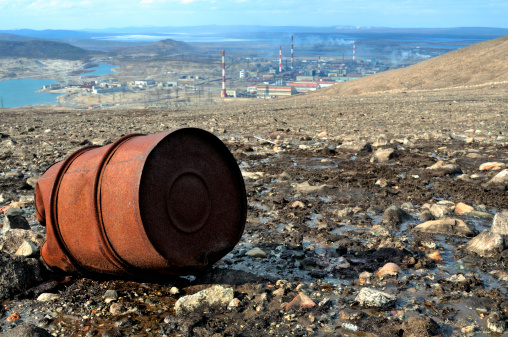
Data show a fifteen percent increase in toxic chemicals released from 2012 to 2013.
Every year, American companies handle hundreds of chemicals known to the U.S. Environmental Protection Agency (EPA) to pose serious health and environmental risks. The EPA gathers data on these chemicals from facilities across the country through its Toxics Release Inventory Program (TRI) and generates annual reports on the amount of toxic pollution released into the environment.
In January, the EPA released a report for the period spanning 2012 to 2013 showing a single-year increase in both the total quantity of toxic chemicals in the United States and the amount of toxic chemicals released into the environment.
In total, the volume of toxic chemicals managed by American industrial facilities increased by four percent. All together, these chemicals constitute 25.63 billion pounds of material, including chemicals stored and used on-site at refineries and other reporting industries, as well those recycled, treated, burned for energy, and disposed of or released into the environment.
The report also details a fifteen percent increase in the volume of toxic chemicals released into the environment, citing a total release of 4.14 billion pounds. According to the EPA, this increase resulted primarily from additional disposal activity in the mining sector, apparently because metal mines deal with large quantities of material at one time, and the composition of the substance being mined—which may change from year to year—can impact whether it must be reported to the TRI. But many factors can influence reporting outcomes.
In contrast to this single-year uptick, the EPA reports that the trend in toxic chemical release has been down on average over the last decade. Indeed, total toxic chemical releases have declined seven percent since 2003, although the total number of facilities reporting to the EPA has also dropped twelve percent, to about 21,500 facilities, in the same period.
Land disposal of toxic waste has increased twenty-eight percent since 2003, going from 2.42 to 2.75 billion pounds per year. Most of this change, the EPA says, resulted from increased waste disposal reported as “other land disposal,” a category largely made up of mining related disposals, which shot up one hundred thirty-one percent since 2003.
Air releases, by contrast, have declined significantly since 2003—a total of fifty-three percent. This, the EPA says, is the result of reduced release of hazardous air pollutants, like hydrochloric acid, from electricity producers.
The release of toxic chemicals into waterways has been more consistent, declining just eight percent on average since 2003, with some individual reporting periods showing increases and others decreases. The EPA reports that toxic chemicals released in the water are most commonly nitrate compounds. These compounds are “often formed as part of the wastewater treatment process, such as when nitric acid is neutralized.” But even these compounds are not released as often as they were in 2003, with a slim but measurable decline of seven percent.
An entire section of the report is dedicated to “chemicals of special concern.” These are chemicals that are either highly toxic, uniquely persistent in the environment, or that pose specific health risks.
Of these chemicals, about 200 are carcinogens, and the data show a forty-eight percent decrease in the airborne release of carcinogenic chemicals since 2003. According to the EPA, the decrease was “driven mainly by decreases in styrene air releases from the plastics and rubber and transportation equipment industries.”
Also included in the “special chemicals” category are those substances identified as “persistent, bioaccumulative, and toxic.” More plainly, these are chemicals like lead and mercury that tend to remain in the environment for long periods of time and can build up in the tissues of living organisms. The EPA tracks 16 of these persistent, bioaccumulative chemicals.
Since 2003, airborne releases of lead and lead compounds have decreased more than sixty-five percent. Mercury release into the air has declined, too, decreasing forty-seven percent since 2003. These decreases are a consequence of reduced reliance on coal as an energy source, the installation of special cleaning equipment at coal-burning power plants, and declines in the domestic manufacture of steel and other metal products.
In a press release announcing the EPA’s recent report, Administrator Gina McCarthy said, “We all have a right to know what toxic chemicals are being used and released into our environment, and what steps companies are taking to reduce their releases to the environment or, better yet, prevent waste from being generated in the first place.”
In this spirit, the report allows individuals to look up TRI reporting data where they live. Readers can also explore reporting data by industry.
Administrator McCarthy went on to say that she is “pleased to see that TRI data show such a commitment to release reductions and pollution prevention on the part of many industrial facilities.”



